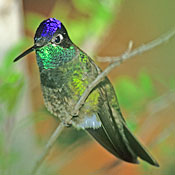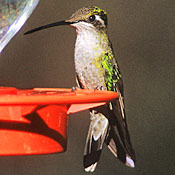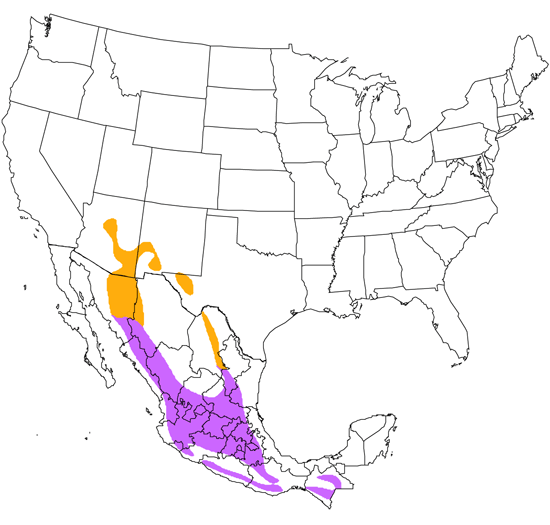Magnificent Hummingbird
Eugenes fulgens

Hummingbird

Length: 5 in. (13 cm )
This large hummingbird is confined to pine-oak woodlands at mid to high elevations in the mountains. It is readily attracted to hummingbird feeders and dominates the small hummingbird species here as well as at flower patches. In addition to nectar, small insects and spiders make up a considerable portion of its food during the summer. The nest is placed high on a horizontal branch and made of moss, plant fibers, lichens and spider webbing.
The four-digit banding code is MAHU.
Bibliographic details:
- Article: Magnificent Hummingbird
- Author(s): Dr. Biology
- Publisher: Arizona State University School of Life Sciences Ask A Biologist
- Site name: ASU - Ask A Biologist
- Date published:
- Date accessed: 4 December, 2025
- Link: https://askabiologist.asu.edu/activities/bird/magnificent-hummingbird
APA Style
Dr. Biology. (). Magnificent Hummingbird. ASU - Ask A Biologist. Retrieved from https://askabiologist.asu.edu/activities/bird/magnificent-hummingbird
Chicago Manual of Style
Dr. Biology. "Magnificent Hummingbird". ASU - Ask A Biologist. . https://askabiologist.asu.edu/activities/bird/magnificent-hummingbird
MLA 2017 Style
Dr. Biology. "Magnificent Hummingbird". ASU - Ask A Biologist. . ASU - Ask A Biologist, Web. https://askabiologist.asu.edu/activities/bird/magnificent-hummingbird
Be Part of
Ask A Biologist
By volunteering, or simply sending us feedback on the site. Scientists, teachers, writers, illustrators, and translators are all important to the program. If you are interested in helping with the website we have a Volunteers page to get the process started.






